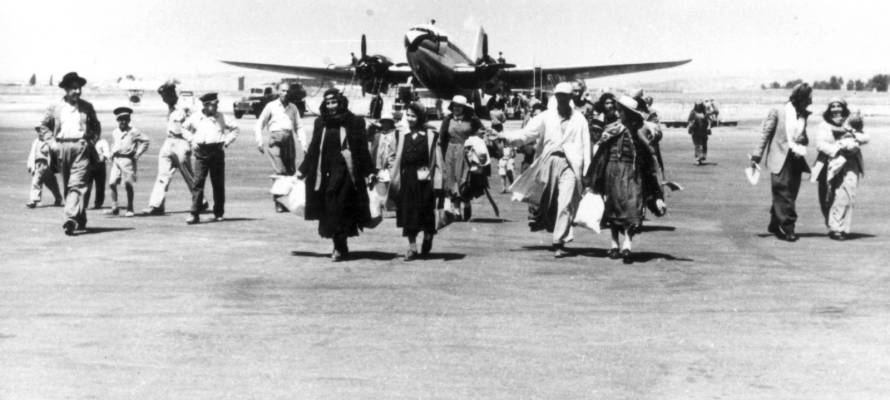
This week in Israel’s history, Operation Ezra and Nehemia, the evacuation of Iraq’s Jewish community, began, and 76 US senators urged President Gerald Ford to stand with Israel in peace negotiations.
May 19, 1950 – Operation Ezra and Nehemia Begins
Named after the biblical prophets Ezra and Nehemia, who led the Jewish people back to Israel after the Babylonian exile, the operation, which began in 1950 and lasted until 1952, resulted in approximately 120,000 Iraqi Jews being airlifted to Israel.
The Jewish community in Iraq dates back to the 6th century BCE, when the Land of Israel was conquered by the Babylonian king Nebuchadnezzar and a large portion of the Jewish community was exiled to Babylon. Although Ezra and Nehemia led a large contingent of Jews back to Israel to rebuild Jerusalem and the Holy Temple, many Jews stayed in Babylon and it became the center of Judaism for more than a thousand years. In fact, the Talmud – the central text of Rabbinic Judaism studied in religious Jewish academies and yeshivot – generally refers to the Babylonian Talmud, which is the basis for all codes of Jewish law and widely referred to in rabbinic literature.
Although in many regards the Jewish community there thrived, it had its ups and downs. In the years following World War I, under the British Mandate, the country, which had been known by several names, became the Kingdom of Iraq, founded in 1921.
In the period of growing unrest and anti-Semitism across the globe leading up to World War II, many Iraqi Jews felt that their way of life and their very survival were in jeopardy due to attacks known in Arabic as farhud (pogrom).
In 1950, at the beginning of Operation Ezra and Nehemia, there were approximately 160,000 Jews living in Iraq, roughly 75% of whom were evacuated during the operation.
After the Six Day War in 1967, Iraq made it almost impossible for the few thousand remaining Jews to leave, and it is estimated that there is perhaps a handful of Jews still in the country.
May 22, 1975 – US Senators Urge President Ford to Stand with Israel
After the 1973 Yom Kippur War, then-Secretary of State Henry Kissinger successfully negotiated a disengagement agreement between Israel and Egypt regarding the Sinai as well as between Israel and Syria regarding the Golan Heights, although the situation remained volatile.
Following a change in leadership both in Israel and the US, talks between US President Gerald Ford and Israeli Prime Minister Yitzhak Rabin broke down.
Ford wrote a letter to the Israeli leader expressing disappointment over the breakdown, and he suspended economic assistance to the Jewish state as well as reducing arms supplies.
In response, 76 US senators stated in a letter to the president:
“We believe that preserving the peace requires that Israel obtain a level of military and economic support adequate to deter a renewal of war by Israel’s neighbors. Withholding military equipment from Israel would be dangerous, discouraging accommodation by Israel’s neighbors and encouraging a resort to force.”
As a result, a level of support was reinstated and negotiations resumed.
By: Penina Taylor, United with Israel
